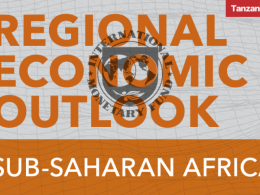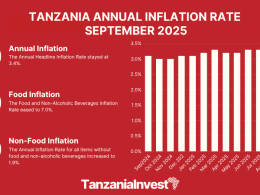According to a recent report in the East African Business Week (EABW), the Government of Tanzania has released a report which states that within the Tanzania business sector, the insurance business has grown significantly in the last ten years.
The government agency that is responsible for licensing insurance firms as well as monitoring the businesses, the Insurance Supervisory Department (ISD), said in their report that a variety of facets within the market have demonstrated steady profit growth.
Professor Gamaliel Mgongo Fimbo, the Chairman of the National Insurance Board, recently stated in the report by the EABW that when compared to previous year’s performance, the insurance market in Tanzania has grown by 33 percent in gross premiums written, which is well over the target rate of 15 percent annual premium growth.
“The industry recorded a significantly improved underwriting profit of TShs2.747 billion (US$2.035 million) compared to the previous year’s profit of TShs460 million ($340,740),” said Prof. Fimbo.
Overall, this growth in the insurance market represents over twice the amount of that experienced by the national GDP as well as the by the nominal financial intermediation sector of the GDP.
According to the annual report from the ISD, the latest of which ended in December 2007, the general insurance mix in 2007 demonstrated a steady share of motor insurance business (36 percent), miscellaneous accidents (27 percent), marine (6 percent) aviation (5 percent) and engineering (5 percent)
In addition, the ISD has indicated its intention to continue advising that insurance companies take sufficient measures in order to ensure that they are able to improve the net retentions and, in doing so, also reduce the net re-insurance outflows.
Overall, long term insurance is relatively low by any standard, but statutory motor vehicle insurance is currently the most underwritten insurance.
At the end of 2007, the insurance industry in Tanzania employed 2,530 people, 39 percent of whom (982 people) worked in insurance firms and the remaining 61 percent were employed by various insurance agencies, broking houses and loss assessors and adjusters.
Of the 982 people who were employed by insurance firms, 55 percent worked for the state-owned National Insurance Corporation (NIC).
Currently, one of the biggest challenges facing the Tanzania insurance business is the failure of some firms to uphold a minimum solvency margin, thus preventing them from being able to fully meet their financial responsibilities.
In addition to this, other challenges include a lack of training facilities and governmental delays in adopting a policy on insurance for its vehicles.
In an effort to restructure and improve its services, the NIC sent its workers home last month with the intention of hiring and training a new set of employees.









